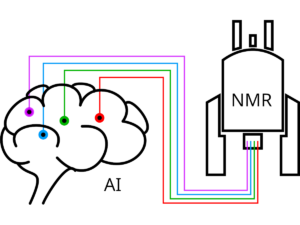2024 vol 3 issue 1
Review
Paweł Tokarz 1 *
1 University of Lodz, Faculty of Chemistry, Laboratory of Molecular Spectroscopy, Tamka 12, 91-403 Łódź, Poland
* Correspondence to: pawel.tokarz@chemia.uni.lodz.pl
pp. 30-52
DOI: 10.58332/scirad2024v3i1a04
Abstract
This review article explores the historical background and recent advances in the application of artificial intelligence (AI) in the development of radiofrequency pulses and pulse sequences in nuclear magnetic resonance spectroscopy (NMR) and imaging (MRI). The introduction of AI into this field, which traces back to the late 1970s, has recently witnessed remarkable progress, leading to the design of specialized frameworks and software solutions such as DeepRF, MRzero, and GENETICS-AI. Through an analysis of literature and case studies, this review tracks the transformation of AI-driven pulse design from initial proof-of-concept studies to comprehensive scientific programs, shedding light on the potential implications for the broader NMR and MRI communities. The fusion of artificial intelligence and magnetic resonance pulse design stands as a promising frontier in spectroscopy and imaging, offering innovative enhancements in data acquisition, analysis, and interpretation across diverse scientific domains.
Keywords
Artificial Intelligence, Machine Learning, Evolutionary Algorithm, Artificial Neural Network, Nuclear Magnetic Resonance, Magnetic Resonance Imaging, Pulse Sequence, Shaped Pulse
First published: 27.03.2024
